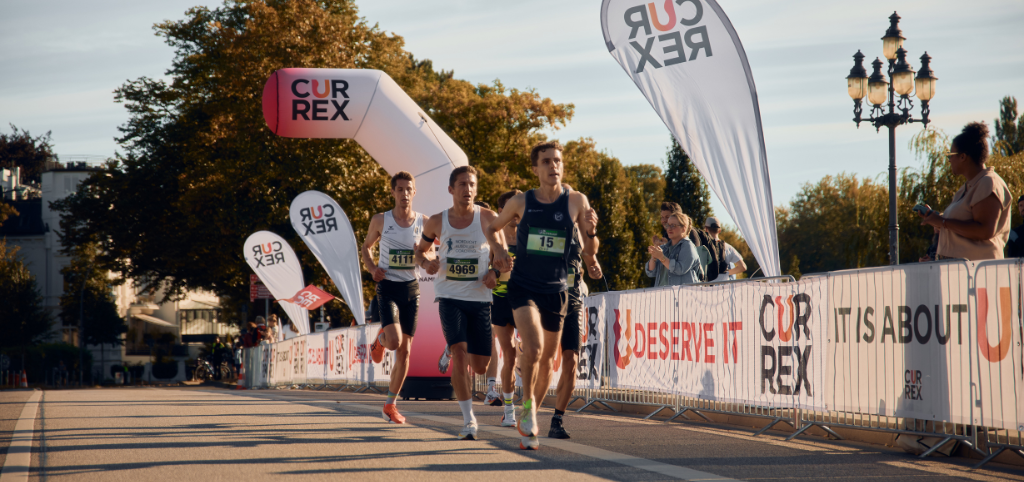RUNNING SHOE TECHNOLOGY

LOOKING FOR THE PERFECT RUNNING SHOE?
We've gathered the most important information about running shoes for you, so that everything fits when you buy your next pair of running shoes.
IN BRIEF
- BLAST FOR RUNNING SHOES
- STABLE VS. NEUTRAL RUNNING SHOES
- WEAR AND TEAR FOR RUNNING SHOES
Running shoes are the Formula 1 of shoe construction. This is where everything is developed and tested that we will find in other shoes in the coming years: Cushioning, knitted upper materials and even carbon plates in the sole. Today we're going on a little journey into running shoe technology and explaining the basics - let's go!

BLAST FOR RUNNING SHOES
Ever heard of heel drop? Today we're talking about heel drop in shoes! The topic of "natural running" may not be as present as it was a few years ago, but the term "heel drop" is still an important technical term among runners and running shoe manufacturers.
But what does this actually mean? The "drop" in running shoes refers to the difference in height from the heel to the forefoot - the "thickness" of the sole has no influence on this. Imagine a high heel, which has a high drop compared to a barefoot shoe, which has zero drop. Due to evolution, the low drop is the most natural variant - after all, the foot itself has no drop.
However, when recommending a supposedly "flat" shoe, it is important to know that the majority of runners require a gentle transition. The most important factor here is the calf muscles, which in most people tend to be shortened, i.e. weak, due to a lot of sitting and the choice of leisure and everyday shoes. Incidentally, this is also often the cause of classic Achilles tendon or plantar tendon complaints. Targeted strengthening and increased flexibility can be a good way to prepare for this. The majority of endurance running shoes currently have a drop of between 10-12 mm. If you want to run with a drop of less than 10-12 mm or enjoy natural running, think about short and crisp strengthening exercises to prevent overloading. For some, the path to less impact will certainly mean leaving a certain comfort zone, but this will pay off in the long term. By the way: The CURREX Insole does not change the drop of the shoe!
STABLE VS. NEUTRAL RUNNING SHOES
When do I need a running shoe with support and when can I run in a neutral shoe? 20 years ago, all shoe companies were of the opinion that the foot should not bend inwards when running. It was assumed that this would be the cause of all kinds of running injuries. To prevent this, orthopaedists made insoles that were firm and lifted the foot on the inside. The shoe industry built shoes that had so much support on the inside that it was no longer possible to walk naturally. Unfortunately, this has not led to a reduction in the number of injuries, as every second runner is still injured at least once a year.
We now know that pronation (the inward bending of the foot) is an important part of healthy running - a natural cushioning mechanism, so to speak. Large studies with over 2000 runners have shown that the risk of injury actually decreases with a little pronation. So when do I as a runner need additional support from the shoe on the inside? There is no general answer to this question. However, we do have the following tip: pay attention to the movement of your legs (knee joints) and the profile of your feet. If you have fallen arches or even flat feet with a knock-knee, more stable shoes are recommended.
So let's summarize once again:
- Every foot is unique
- Pronation is not a bad thing per se
- The leg axis gives you clues for the right support
To be on the safe side, you can get advice from your local running shoe retailer. You can use our retailer search:
WEAR AND TEAR FOR RUNNING SHOES
Have you ever wondered how many kilometers you've run in your running shoes this year? And did you know that running shoes can get tired? We are of course talking about material fatigue here. There are therefore a few signs that could indicate that it's time for new running shoes: are your current shoes worn out, do they have holes, has the cushioning worn off or do you experience pain or discomfort when running? If so, then it might be worth considering new shoes.
Running shoes lose their cushioning properties over time. As a rule, a running shoe is worn out after 800-1000 km and should be replaced as the risk of injury increases. Fatigue fractures can be the result. It is also important to get a second pair of running shoes if you are planning more than 2 running sessions a week, as this also demonstrably reduces the risk of injury.

With our tips for your next running shoe purchase in your pocket, nothing stands in the way of your successful running training. Have fun!
And if your feet pinch or your knees hurt, let us know. The CURREX insoles optimally distribute the load on your joints and give your run that extra boost.









